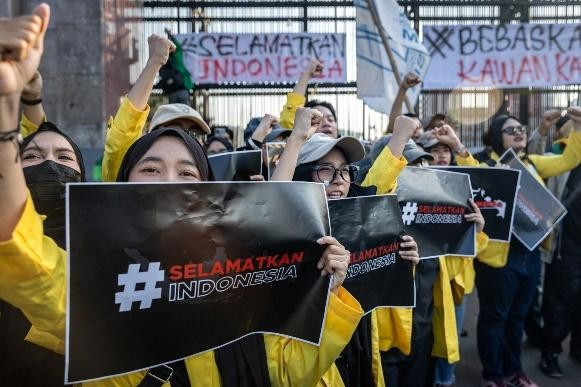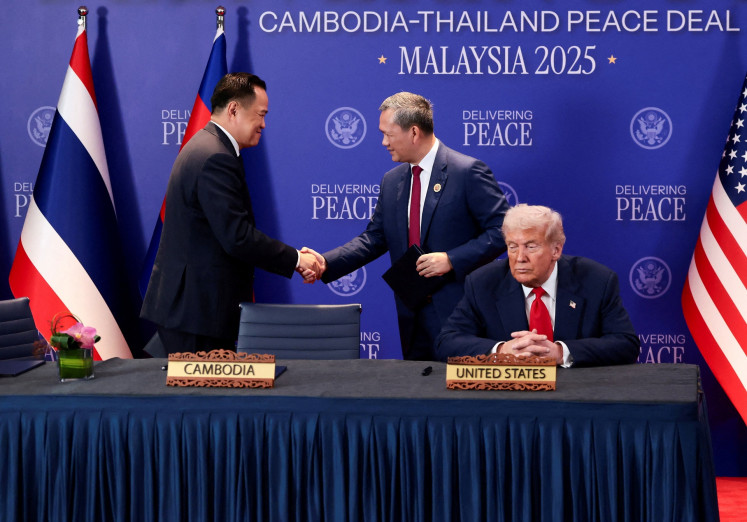Popular Reads
Top Results
Can't find what you're looking for?
View all search resultsPopular Reads
Top Results
Can't find what you're looking for?
View all search resultsOvercapacity in crumb rubber
True, the price of rubber, like most other commodities such as palm oil, cacao and coal, has been very low over the past five years.
Change text size
Gift Premium Articles
to Anyone
T
he Indonesian Rubber Producers Association (Gapkindo) has urged the government to review its plan to open the crumb rubber industry to foreign investors because the industry is suffering from overcapacity due to an acute lack of raw materials.
The government apparently thought that increasing the number of crumb rubber factories would automatically increase competition for natural rubber latex and this would help raise the earnings of smallholders who own over 85 percent of the country’s rubber plantations.
But the association claims that even now the industry already has a total installed capacity of 5.6 million tons annually while the total supply of rubber materials from domestic plantations is only about 3.5 million tons, thereby forcing crumb rubber manufacturers to operate way below their capacity.
Yet more worrisome, according to the association, is that more than 60 percent of the total installed capacity is controlled by foreign companies, notably from China, and their local affiliates.
True, the price of rubber, like most other commodities such as palm oil, cacao and coal, has been very low over the past five years. It declined from a high of US$5 per kilogram in 2011 to a low of $1.20 as of now. But the price has mainly been driven by global supply and demand, especially for Indonesia, the world’s second-largest producer. It exports more than 80 percent of its output. Crumb rubber producers mostly use international prices as their reference for local rubber procurement.
What is making things worse for Indonesian rubber farmers is that the prices they get have mostly been half of what rubber growers in Thailand, the world’s largest producer, and Malaysia, the third-largest producer, have enjoyed. Therefore, the government, besides reconsidering the plan to liberalize the crumb rubber industry, needs to look into the structure of the relationship between smallholders and rubber processing companies as well as the root causes of why our farmers are being paid less than their counterparts in other major producing countries.
The lower prices have made the living conditions of rubber farmers much harder because their yield is only about half of what is produced in Thailand and Malaysia. Their rubber trees are also old and the quality of their latex is very low.
Yet, even more unfortunate for the rubber industry is that while the government has been implementing huge programs for replanting smallholder oil palm plantations with high-yield seeds, we have not heard of such a program for smallholder rubber estates.
Instead of wooing more foreign investors, it would perhaps be more productive for the government to stimulate investments in downstream rubber plants to produce building materials, parts or components of automobiles and electronic goods as well as adhesives and sealants. Thus far, the biggest industrial user of natural rubber has been tire manufacturers, which have to compete with synthetic rubber producers.










